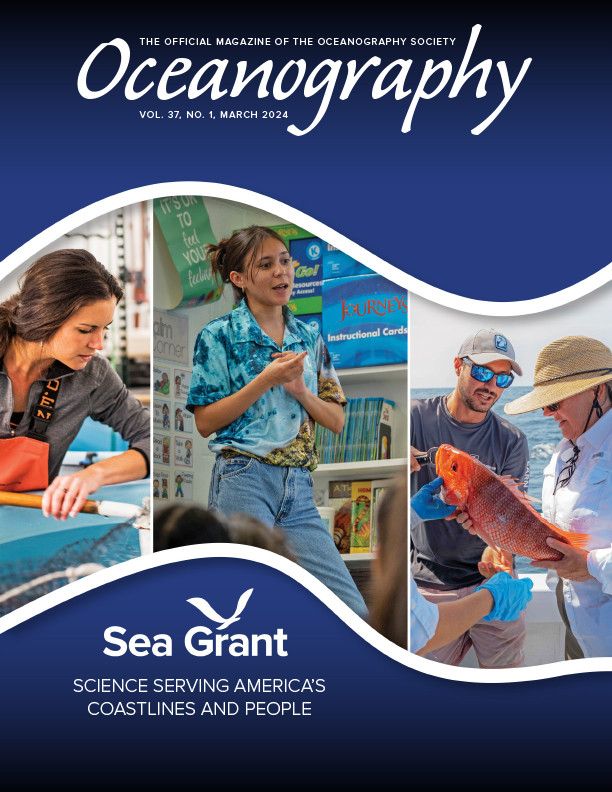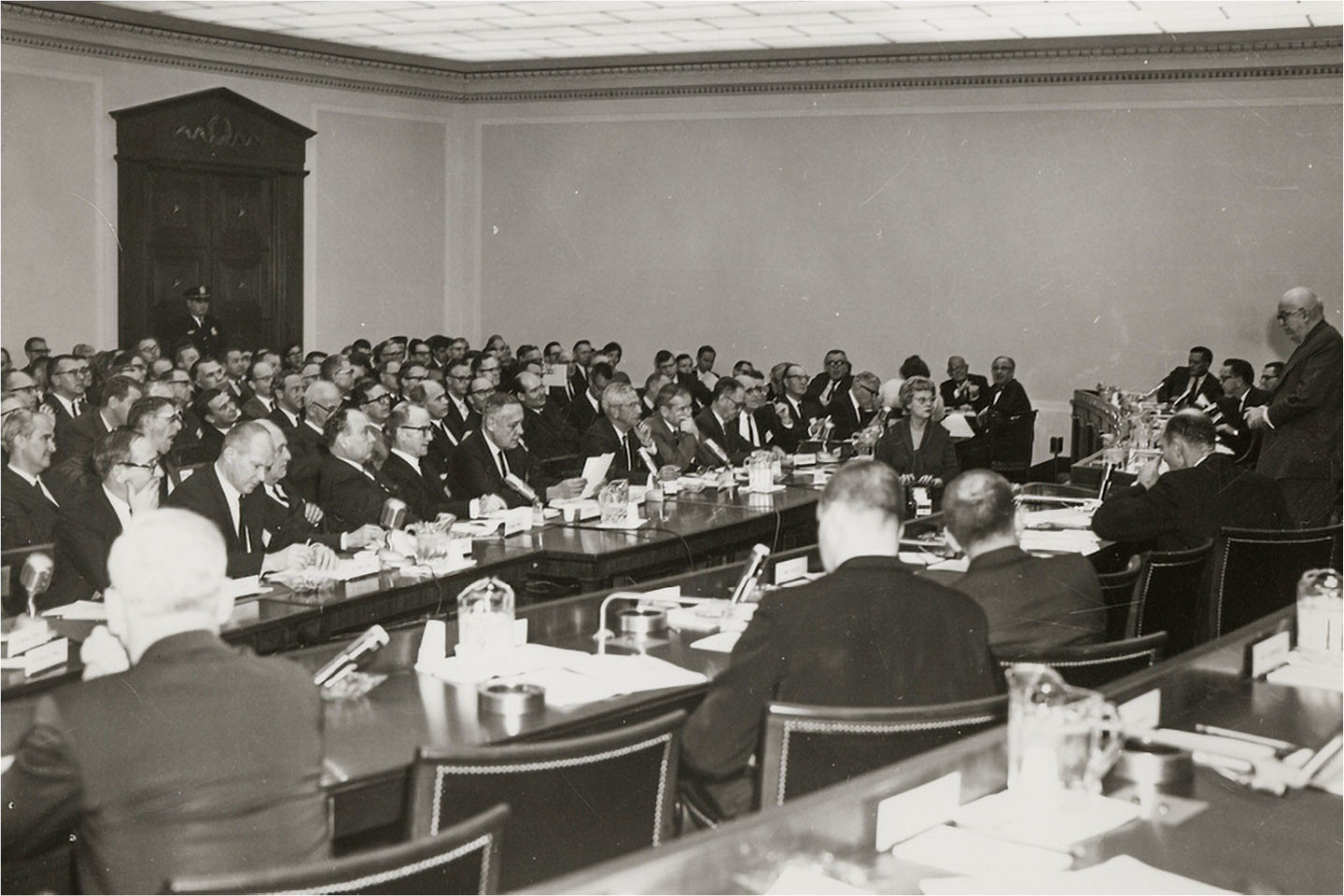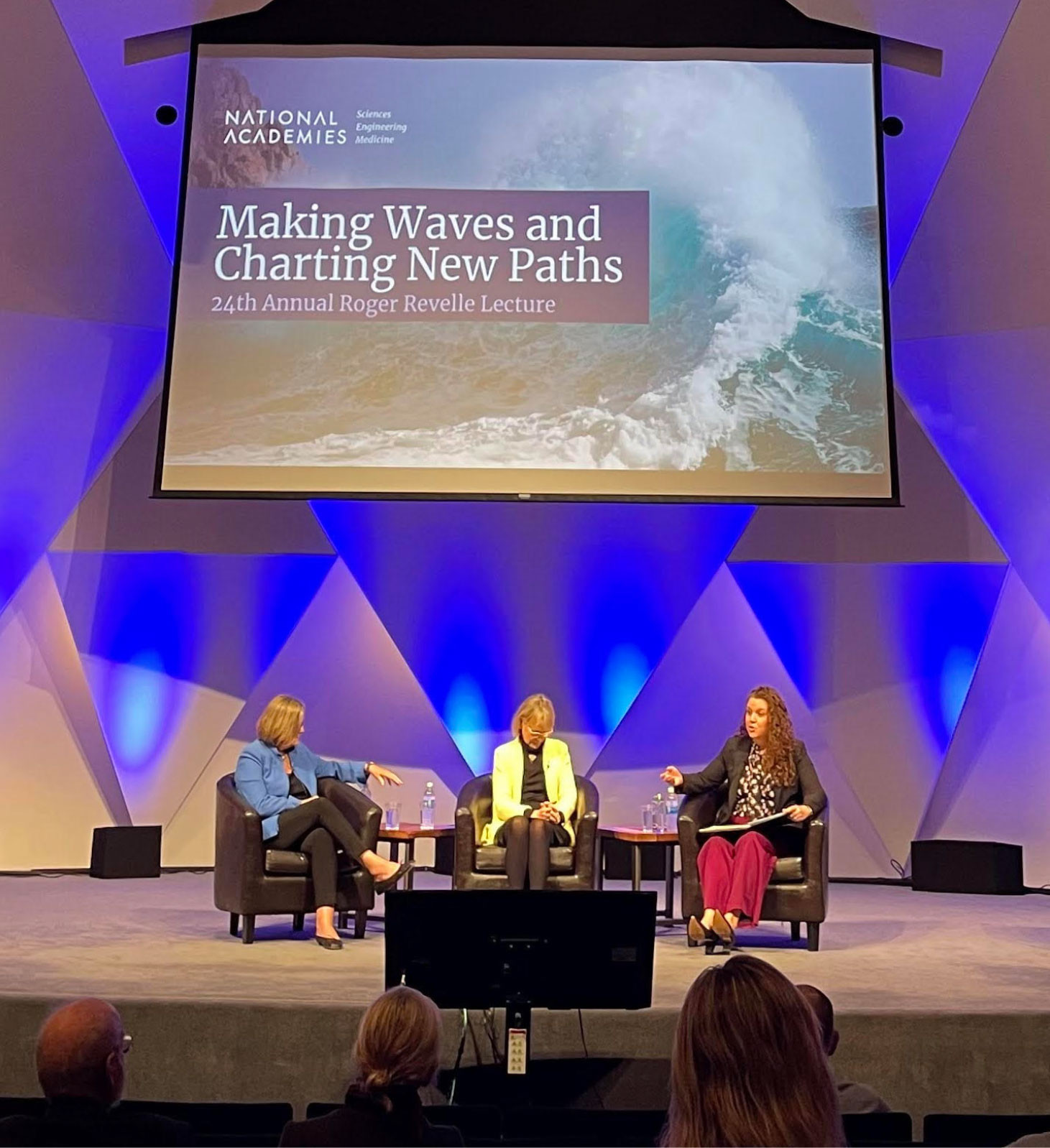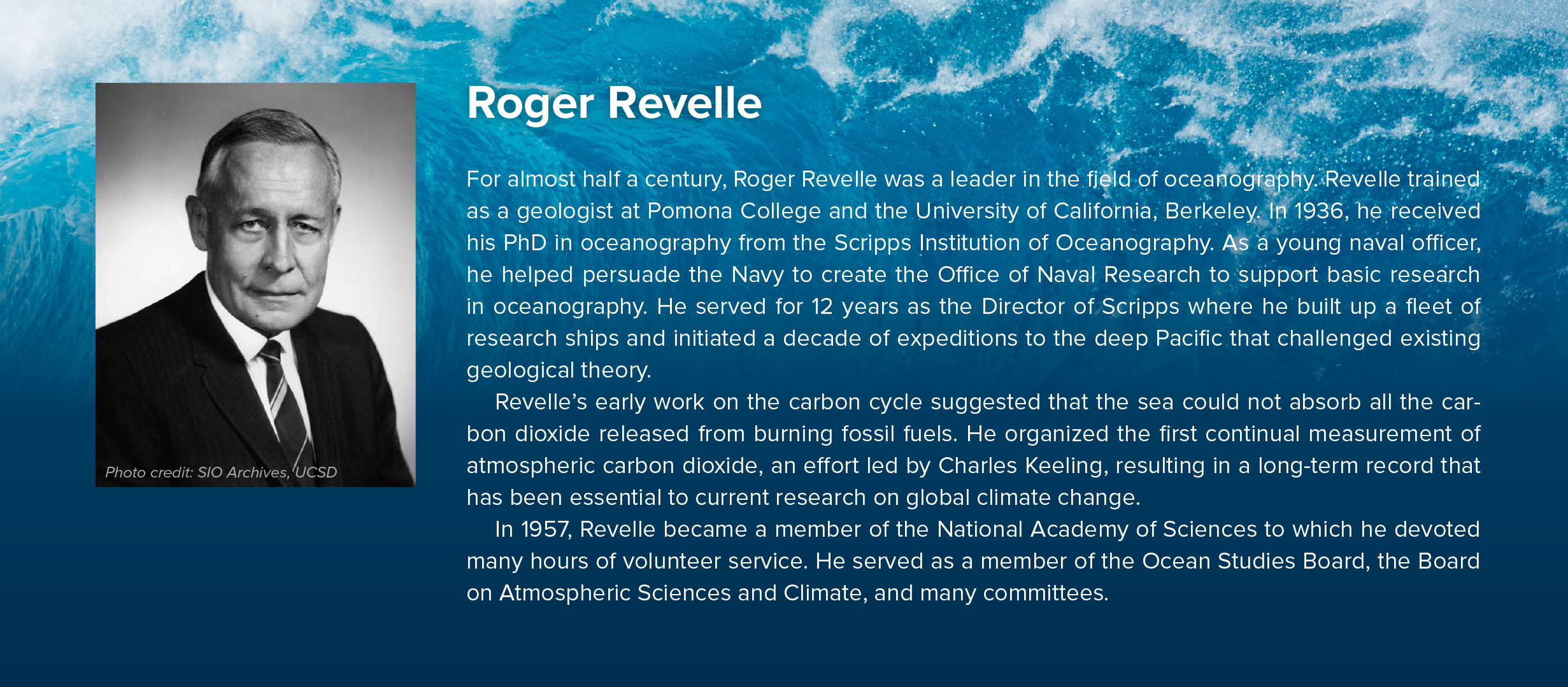Full Text
Introduction
Although a man of the sea, oceanographer Roger Revelle famously used an outer space metaphor when testifying before the US Congress in the late 1950s about “this carbon dioxide thing” he theorized could be potentially impacting Earth’s climate (Figure 1).
|
|
“The Earth itself is a spaceship,” Revelle said. “[Humans] have lived here on this spaceship of our Earth for a good many hundred thousand years, and we human beings are specifically adapted to it… Our whole physiology and psychology really depend upon the characteristics of the Earth.” One distinguishing characteristic of this “Earth spaceship,” Revelle continued, is the ocean, this “large bod[y] of liquid water” that makes this planet unique in the solar system (Vaillant, 2023).
Moving beyond metaphors, Revelle specifically compared the ocean and outer space environments in undated writings titled In these Days of Space Travel. “The fact is,” Revelle wrote, “that we know less in detail about the shape of nearly three-quarters of the earth’s surface than we do about the surface of the moon. I am speaking, of course, of the part of the Earth’s surface which lies beneath the sea” (Day, 2000).
Revelle was not the first and will not be the last person to compare the ocean and outer space. Both have been declared “the final frontier,” inspiring awe and a sense of adventure in everyone from school children to Hollywood directors. Thousands of people around the world tune into deep-sea live streams from NOAA Ship Okeanos Explorer, a dedicated exploration vessel, and people travel to Florida from thousands of miles away to watch NASA rockets launch from the Kennedy Space Center. Despite their many differences, the evergreen appeal of these frontiers derives in part from their foreignness, their vastness, their harshness, and their mystery.
Because Revelle linked outer space and the ocean in many of his remarks, it was fortuitous that two women who can only be described as outer space and ocean legends spoke at the 24th Roger Revelle Commemorative Lecture in May 2023. Margaret Leinen, director of the Scripps Institution of Oceanography and vice chancellor for marine science at the University of California, San Diego, and Kathryn Sullivan, NASA astronaut and former NOAA administrator, have shattered glass ceilings and expanded the range of possibilities for women in the sciences beyond anything that Revelle could have ever imagined: when Revelle was born in 1909, women were still over a decade away from receiving the right to vote; when he delivered his congressional testimony in 1957, the audience consisted entirely of white men. The 2023 Revelle Lecture “Making Waves and Charting New Paths” describes exactly how women in science are able to make an impact; they make waves to move people, change minds, climb walls, and push down barricades with the aim of opening up possibilities for a different, wider, and broader future.
A New Take on Tradition: Innovating on the Revelle Lecture Format
The Roger Revelle Commemorative lecture was created by the Ocean Studies Board of the National Academies of Sciences, Engineering, and Medicine to honor an oceanographer, “grandfather of the greenhouse effect,” and passionate advocate of international partnerships. Every year, the lecture aims to highlight the important links between the ocean sciences and public policy, continuing Revelle’s legacy of scientific research that advances knowledge and provides critical information on issues of importance to society.
While the topics have varied—each one of the previous Revelle lecturers has been an ocean maverick, leaders in their field—the format of the lecture has rarely deviated from the traditional lecture style. For the May 2023 lecture, the Ocean Studies Board decided to innovate on the format. Leinen and Sullivan were happy to chart a new path, and the result was the “fireside chat” format, which provided them both a chance to tell stories and to explain how personal motivation, a wealth of optimism, and a thirst for discovery drove them to explore the frontiers, ranging from the remote depths of the ocean to the vastness of space (Figure 2). Thanks to extensive preparation—including back-and-forth editing, crowdsourcing questions from trusted colleagues, and relying on my own natural curiosity—the 2023 Revelle Lecture became an hour of nonstop storytelling. Although Leinen and Sullivan are both accomplished women in their fields, the stories they shared were highly relatable—dealing with sexism, facing adversity, and the importance of displaying resilience despite not knowing where the path ahead may lead. Ocean professionals at every stage of their career can gain invaluable insights from the messages they shared.
|
|
Women at Sea
In 1973, Leinen and Sullivan participated in Project FAMOUS—the French-American Mid-Ocean Undersea Study. This international collaboration was conducted from R/V Knorr, a Woods Hole Oceanographic Institution (WHOI) research vessel, and was the first close-up investigation of a mid-ocean ridge system using submersibles, including HOV Alvin. “The mega super names of oceanography were the ones leading this cruise,” Sullivan explained, while she and Leinen were not only graduate students, “with the net present value of deck paint,” but also the only two female graduate students on the expedition. (A decade earlier, there would have been no woman, as women were not allowed to participate in WHOI seagoing oceanographic voyages until 1963.) Leinen recalled being stopped early in the voyage by the ship’s bosun. “Wait a minute,” the bosun said to her as she tried to access her piston coring equipment on the aft of the vessel. He proceeded to pull a piece of chalk out of his pocket and drew a line two feet aft of the vessel’s door. “No women aft of this,” she recounted the bosun said, “you could cause a distraction and somebody might be hurt.” For a celebration after the famed voyage, the wife of R/V Knorr’s skipper asked Sullivan to serve hors d’oeuvres to the senior male scientists and asked Leinen if she had brought a skirt along to wear to the event.
The two women continued to face obstacles as their careers progressed. Sullivan recalled her struggles fitting into NASA’s spacesuits, which were designed for men’s proportions and not women’s. Leinen—who has been deeply involved with the creation and implementation of the United Nations Decade on Ocean Science for Sustainable Development (2021–2030) and who currently serves as the co-chair of the prestigious Decade Advisory Board—said that in 2023 a man flippantly remarked to her “oh, you’re just on the Advisory Board because you’re a woman.”
Diversity in ocean sciences has improved since 1973, but there is still work to do. Globally, women represent 37% of the ocean science workforce, but that percentage varies vastly from country to country (Legg et al., 2023). In academia, the “women in science” pipeline is famously leaky. Ranganathan et al. (2021) found the percentage of women drops for each stage of academic progression, from PhD student to full professor. The numbers are even starker for women of color. Isma et al. (2023) found less than 2% of graduate students and 1% of tenured faculty in Earth, atmospheric, and ocean sciences identify as Black or African American. Statistics are difficult if not impossible to find for representation of nonbinary genders in ocean sciences (Picq and Tikuna, 2019; Strauss et al., 2020).
Resilience Among Rough Waters
While the term “pioneer” is often used to describe the groundbreaking, first mover, innovative careers of people such as Revelle, Leinen, and Sullivan, Leinen was skeptical about the term as applied to herself. “Well,” she said bluntly, “the pioneers knew where they were going.” Leinen said that when she was starting out in the ocean science world, “I just had a vision of, I was going to get a degree and science would follow,” but she had no idea how she was going to get there. She added that “I took the Yogi Berra approach: when I saw a fork in the road, I took it.” Sullivan remarked that the application of the term “pioneer” to herself was largely a factor of the times, and she too did not see the full picture of how she was going to reach her broad goals. “To the world at the time it was novel for someone like me to want to go down that path [of oceanography and becoming an astronaut],” she said, “but it was not novel to me. It was just the vision I had of the path I wanted to be on,” born of a desire to live a life that was “inquisitive and adventurous.”
To reach “the dot on the horizon,” Sullivan explained, cannot be accomplished via a linear trajectory. On the path to a pioneering life, both women suffered from imposter syndrome. “Multiple times,” Leinen emphasized. It is “just part of the landscape,” Sullivan continued. They both had ups and downs, successes, and failures, and plenty of time in between just chipping away toward an unknown future. “Even if you had a detailed path,” Sullivan continued, “life will intervene” and throw you unexpected curveballs, requiring women to flex, adapt, and make it up as they go to take advantage of opportunities.
The Science-Policy Interface
Although Roger Revelle is primarily remembered as a pioneering oceanographer, the Lecture is meant to highlight the important links between ocean science and public policy that Revelle recognized and respected. In a tribute to Revelle published in a 1997 edition of the Proceedings of the National Academy of Sciences of the United States of America, Walter Munk wrote that “policymakers looked to [Revelle] for a reasonable assessment of which scientific problems should take priority.” During a speech at Scripps in 1984, then-Congressman Emilio Daddario (D-CT) remarked on Revelle’s “combined experience, intelligence, and good judgment about issues.” Leinen and Sullivan have both served in the United States federal government. Leinen was Assistant Director for Geosciences and Coordinator of Environmental Research and Education at the National Science Foundation (NSF). Sullivan was both NOAA’s Chief Scientist and Under Secretary of Commerce for Oceans and Atmosphere and NOAA Administrator at different times in her career. Both women emphasized the importance of science during the policymaking process but acknowledged that there is more to good policymaking than good science. Leinen said that during her tenure at NSF, “I found “the less you could talk about ‘our science says this, therefore you should do that,’ the better off you were.” She cautioned that “as scientists, we have more influence when we speak the truth about what we’re doing and what its limitations are.” Sullivan agreed that science is just a piece of the policymaking puzzle. During the policymaking process, she said, “science can provide an underpinning, some guardrails for policy decisions that are always more complex.”
Both speakers agreed that the political landscape, particularly in the United States, has changed rapidly in the last 20 to 30 years, and the increasingly partisan nature of politics has made incorporating science into policy more difficult. Sullivan noted that in the United States for decades after World War II, there was “a broad recognition, by politicians of both parties, that science is science, math is math.” In the current era, she continued, partisanship has led some to think that there’s a “conservative versus liberal, Republican versus Democrat way to do math or physics,” and warned that that mentality “puts us on a perilous course.” In describing how scientists have been increasingly seen by many as “just another advocacy group,” Leinen warned that this was in part because of the tunnel vision scientists can have when considering the importance of their work and science as opposed to other key factors. “You look at the climate issue, and there are world economies at stake over how rapidly we change,” Leinen emphasized. “Policymakers don’t have the luxury of seeing the world in [a] unidimensional way,” Sullivan added. Science must always be part of the solution, but both women recognized that good policy requires a more holistic approach to “craft the path that’s most best, and least worst,” as Sullivan put it.
Conclusion
At the end of the lecture, Leinen and Sullivan were asked what issues will not be discussed at the Revelle Lecture a century from now. Leinen expressed her hope that through science and innovation, “we will not be talking about the CO₂ problem.” Sullivan turned the question around to focus on a topic she hoped the Ocean Studies Board would be talking about in 100 years: “celebrating that we’ve radically increased our knowledge and understanding of the ecology of the ocean.” These divergent answers reflect the vastness and diversity of the marine science community and exemplify that despite all the pioneering these women have done, there are still numerous paths that need to be charted.
|




 > High res box
> High res box